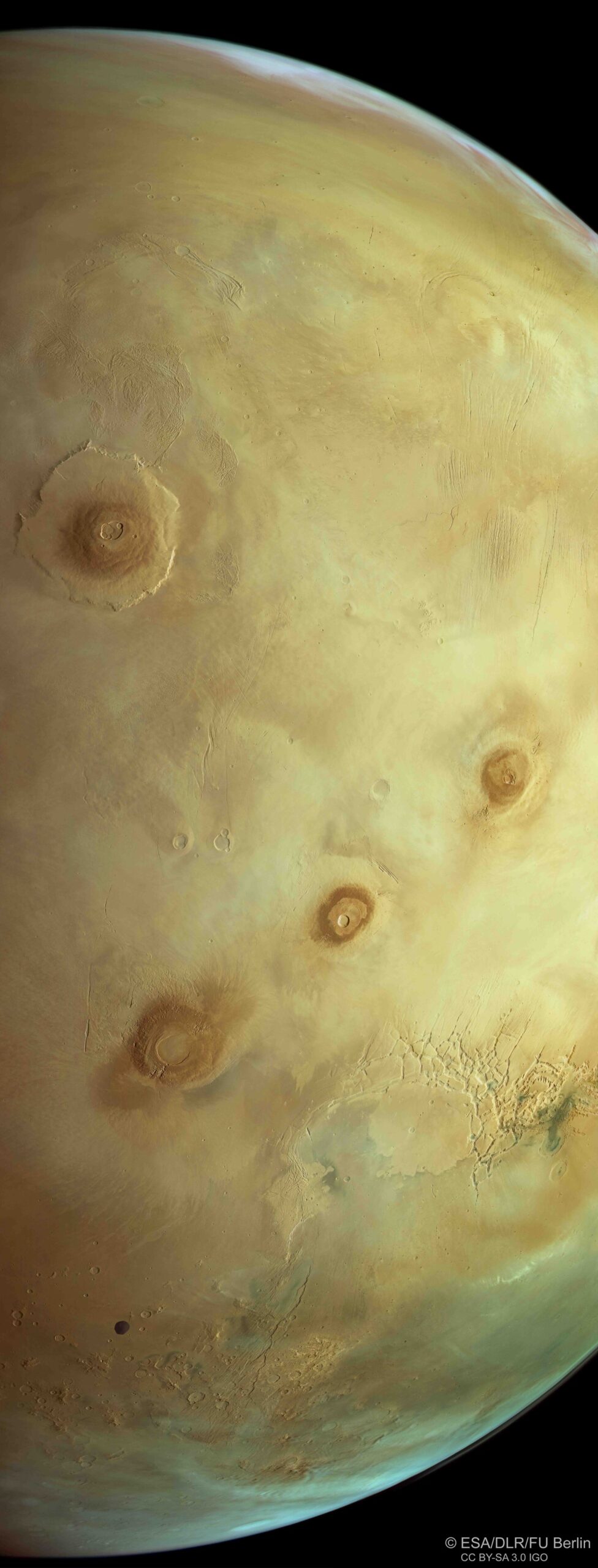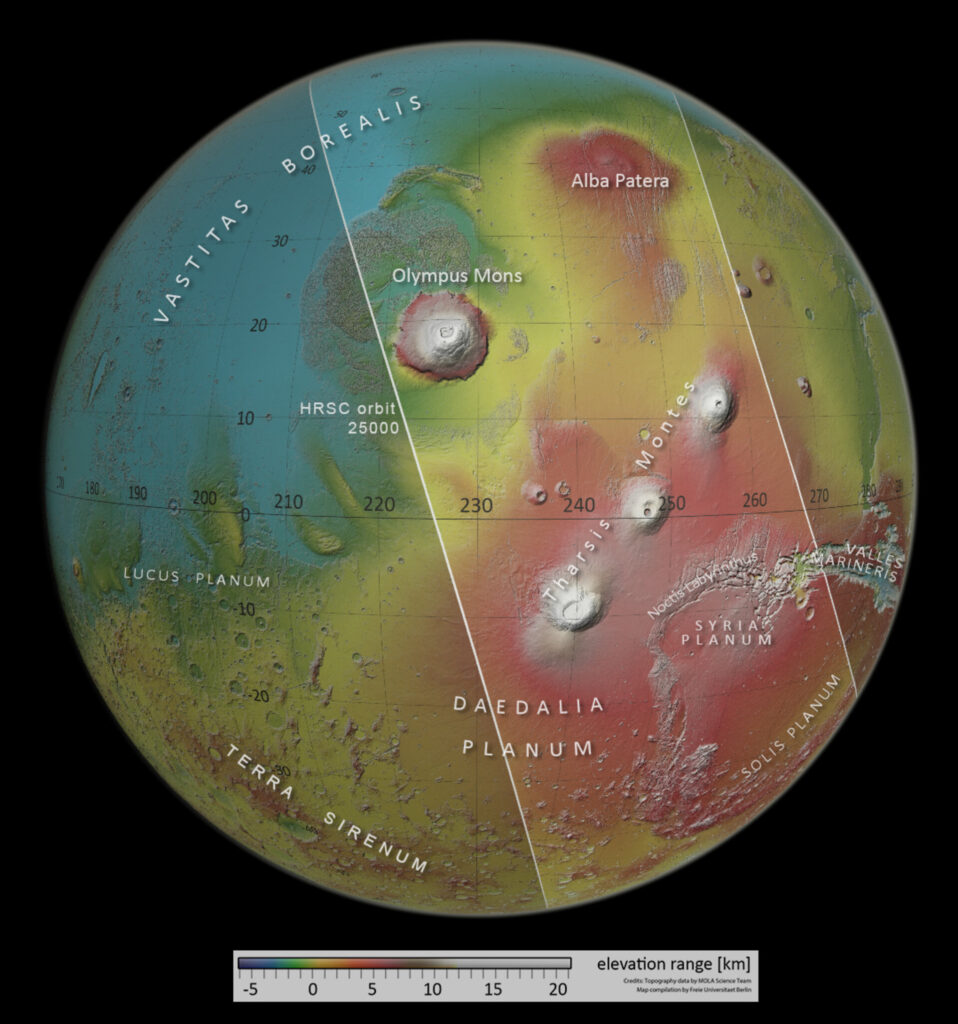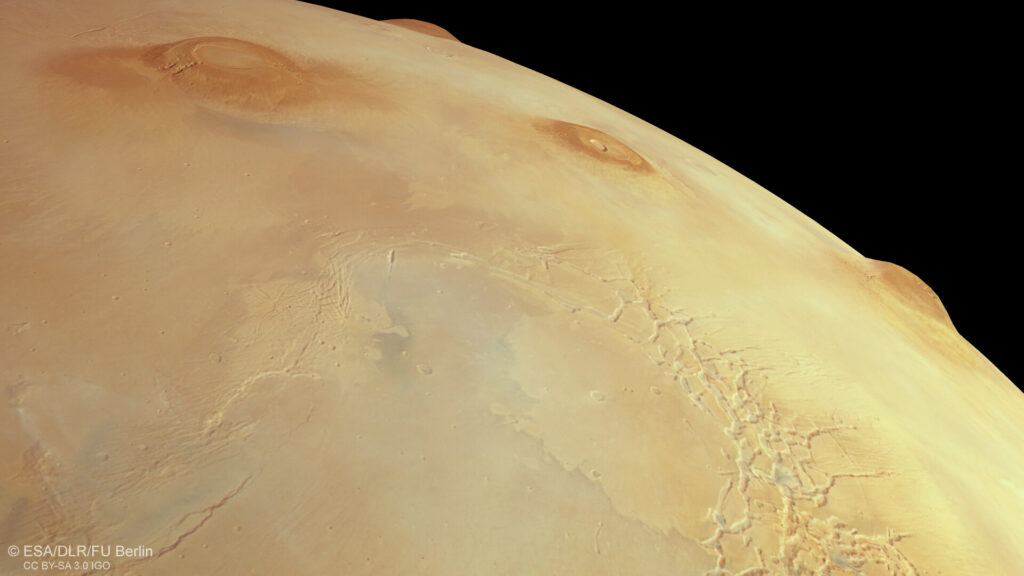ESA has published a picture taken during the anniversary orbit of the Mars Express spacecraft around the Red Planet. The famous Martian colossal volcanoes, as well as Phobos, can be seen on it.

Mars Express entered orbit around the Red Planet in late 2003. Over the next two decades, it collected a huge amount of data that significantly supplemented our knowledge about Mars. Mars Express has compiled detailed maps of the planet, estimated the distribution of various minerals and water ice deposits, studied the atmosphere, as well as the two companion moons Phobos and Deimos.
On October 19, Mars Express completed its 25 thousandth orbit around Mars. In honor of this event, ESA published a picture taken by the spacecraft that day.

The anniversary photo is dedicated to the province of Tharsis, a huge plateau that occupies about a quarter of the surface of Mars. It is home to famous colossal volcanoes, the largest of which is Olympus (the upper part of the frame). Its height from the base to the top is 26 km.
A chain of three other colossal volcanoes stretches below Olympus. These are Ascraeus (height 18 km) and Pavonis (14 km) Mons, and Arsia (17 km). Next to them is a formation called Noctis Labyrinthus. It is a network of intersecting canyons filled with colossal landslides and sand dunes. The total length of Noctis Labyrinthus is 1,190 km.

In addition to huge volcanoes and canyons, Phobos is also in the photo. It can be seen as a dark spot at the bottom of the image. Even below Phobos, you can see the characteristic bluish stripes. These are clouds. They are formed in the Martian atmosphere due to the peculiarities of the planet’s topography.
According to https://www.esa.int
Follow us on Twitter to get the most interesting space news in time
https://twitter.com/ust_magazine


